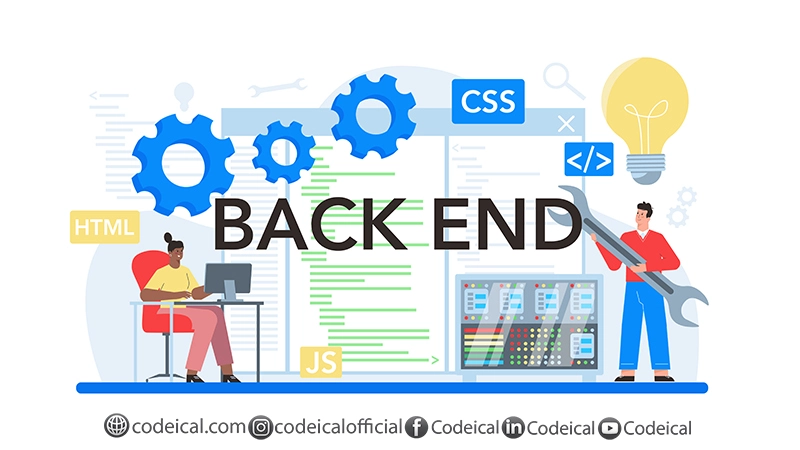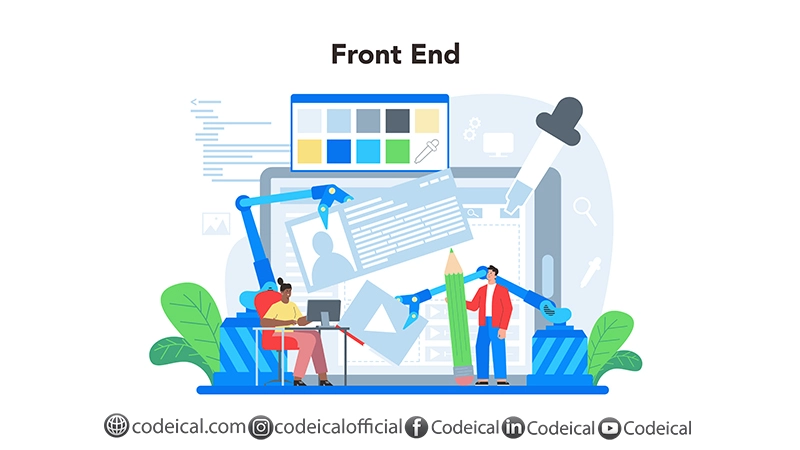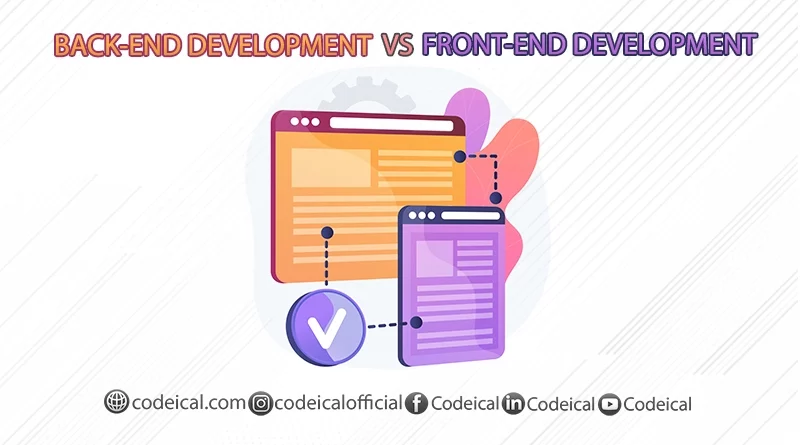Back-End Development vs Front-End Development
Welcome to my Article, In this Article, As you would have read the Title “Back-End Development vs Front-End Development” that is what I’ll discuss
You’re interested in delving into the realms of coding and web development, but you might be uncertain about the distinctions between back-end development and front-end development. How can you go about acquiring the expertise to specialize in either of these fields?
Having a clear understanding of these primary specializations within web development will expedite your learning of the pertinent programming languages and tools. If you aspire to embark on a career as a web developer, it’s crucial to concentrate on one of these domains.
As a result, this article will explore the key disparities between back-end and front-end development. We will delve into the specific responsibilities each area entails in website projects and identify the essential tools you should master to become a proficient back-end or front-end web developer.
Continue reading!
How do websites work?
Before delving into the distinctions between back-end and front-end development, let’s explore some technical aspects regarding the inner workings of websites.
Have you ever wondered what occurs behind the scenes when you visit a website? Who is responsible for shaping the appearance and functionality of your favorite social network?
In essence, every website is composed of two fundamental components:
- The outward appearance
- The underlying functionality
The first component encompasses everything visible and interactive within your web browser. This is the domain of front-end developers, who handle elements like colors, fonts, and layouts.
The second component involves the logic and “brain” that powers the website. For instance, when you log into Facebook, the website must verify your identity. Your user data resides on a web server and must be accessed to confirm your login credentials.
This is the realm of back-end developers, who construct the website’s features responsible for storing and retrieving user data and presenting the right information to the correct users.
One of the most significant distinctions between these two specializations lies in the programming languages you must learn. Therefore, if you aspire to become a web developer, it’s essential to decide on your focus before embarking on your initial programming language.
Now, let’s explore both areas separately..
Back-end development

In modern times, the majority of websites display content tailored to individual users. For instance, on a social network, when you log in, you’ll see your own posts and those of your friends in your feed.
But how does the website determine who your friends are and keep track of all the content you create and share? This is where back-end developers come into the picture.
Back-end developers employ databases to store your data on a web server. A server is essentially a computer that knows how to retrieve this data accurately when it’s required. To ensure everything functions smoothly, back-end developers construct web applications to create the specific features the website needs.
So, when you log in through your web browser, the server receives a request from your browser, indicating your desire to log in and view your feed or homepage. Subsequently, the database retrieves the relevant data and sends it back to your browser, resulting in a welcome message appearing on your screen.
Tools for back-end development
Backend developers primarily utilize programming languages that center on tasks related to database management and various aspects and features of a website. These languages are commonly referred to as server-side languages.
The following are some of the most widely used and highly regarded programming languages for web development:
- PHP
- Python
- Ruby
- Java
Furthermore, backend developers employ SQL (Structured Query Language) to store and oversee user data in databases. Consequently, the scripts and code written in any of the aforementioned languages seamlessly collaborate with a database management system such as MySQL or PostgreSQL.
Example of a back-end design pattern
When I first delved into the world of coding, I frequently encountered challenges in comprehending the inner workings of the back-end. At times, it all seemed a bit too abstract, but that’s perfectly normal.
To facilitate a better grasp of these concepts, consider a more practical analogy. Let’s imagine you’re in a shoe store:
You have a specific pair of shoes in mind, and you communicate your preference to the salesperson. This salesperson is the individual you interact with, akin to the front-end of a website, right?
Now, the front-end doesn’t inherently know what to do. It primarily focuses on appearance and lacks in decision-making, so it needs to consult with their superior for guidance.
However, the boss, on the other hand, excels in giving instructions but may not have hands-on skills. (You can likely recall a real-life example of such a boss!)
So, the boss identifies the most skilled and efficient employee to retrieve the pair of shoes you desire. This employee promptly scurries to the back room to obtain the requested footwear.
Ultimately, the salesperson presents you with the product. Once again, this interaction serves as the interface you’re dealing with.
Despite its intricacies, this pattern is one of the most prevalent design patterns in back-end development. Specifically, we are referring to the Model-View-Controller pattern (MVC).
To recap quickly based on our shoe store example:
- The model corresponds to the capable employee in the back room.
- The view represents the aesthetically pleasing salesperson.
- The controller is akin to the authoritative supervisor.
For a more in-depth explanation of how MVC functions, you can also find informative resources on YouTube, particularly as a part of Harvard College’s CS50 course.
Front-end development

While storing user data is important, what really enhances the visual appeal of your favorite websites?
Front-end developers are the creative minds behind the aesthetics of every webpage you explore. They are the ones in charge of the visual elements and the interactive features you directly engage with.
Furthermore, their responsibility extends to ensuring the website reflects the brand’s identity and delivers the desired emotional experience to its users. This particular facet of web projects is commonly referred to as web design.
Tools for front-end development
Regarding the markup and programming languages employed by front-end developers, their primary instruments consist of:
- HTML, which establishes the fundamental content and organization of a web page, encompassing text, hyperlinks, lists, tables, images, and various media.
- CSS, is employed for enhancing the visual aesthetics and user appeal of the content created with HTML.
- JavaScript, is utilized to introduce interactivity and responsiveness to websites, empowering front-end developers to incorporate dynamic elements.
Full-stack development – combining both areas
A full-stack developer masters both aspects of creating and maintaining a website. In fact, sometimes it’s even not that black and white with the division into the back-end and front-end sides of a project. Each one needs to understand what the other one can and will create.
In the future, web projects are only going to become more complex and diverse. Therefore, understanding both sides of the development process is an invaluable asset to have.
Thus, if you can’t quite decide which area to specialize in, becoming a full-stack developer is a lucrative career option. Most often, full-stack developers become team leaders since they know how to manage an entire team of front-end and back-end developers.
Final thoughts: Back-end Development vs Front-end Development
In brief, back-end development manages and structures data, facilitating the transmission of information to make websites more dynamic when compared to those solely relying on front-end development tools.
As mentioned previously, these two domains vary in terms of the programming languages they employ.
Despite the evident distinction between back-end and front-end development in web projects, they are essentially two complementary aspects of the same endeavor. So, regardless of your specific interest in web projects, you’ll gain familiarity with both facets.
If you found this discussion about the disparities between back-end and front-end development engaging, please feel free to leave a comment below!
P.S. If you found this article informative, kindly share it with others! Your support is greatly appreciated!
Enjoy your programming endeavors
– Codeical

